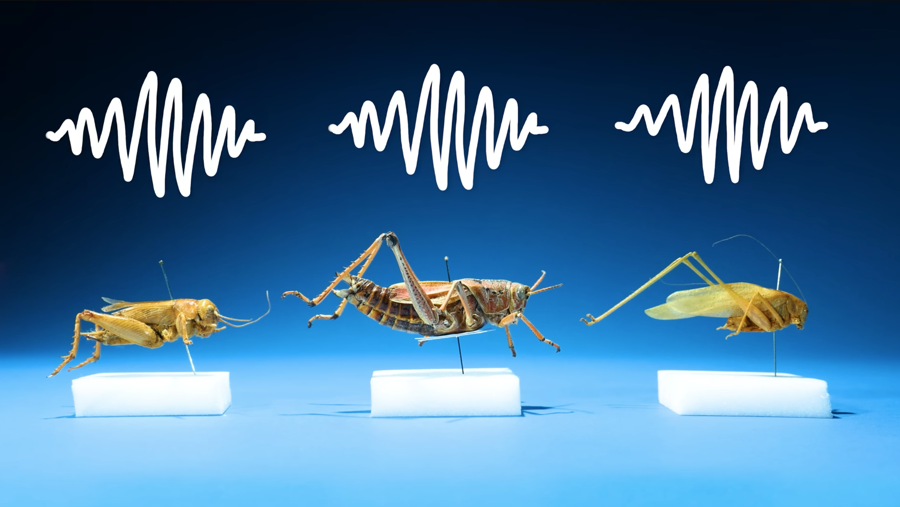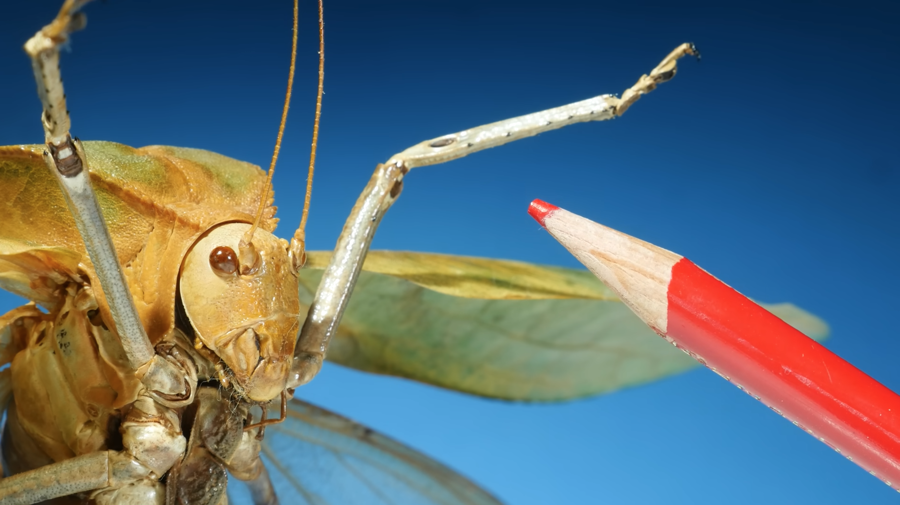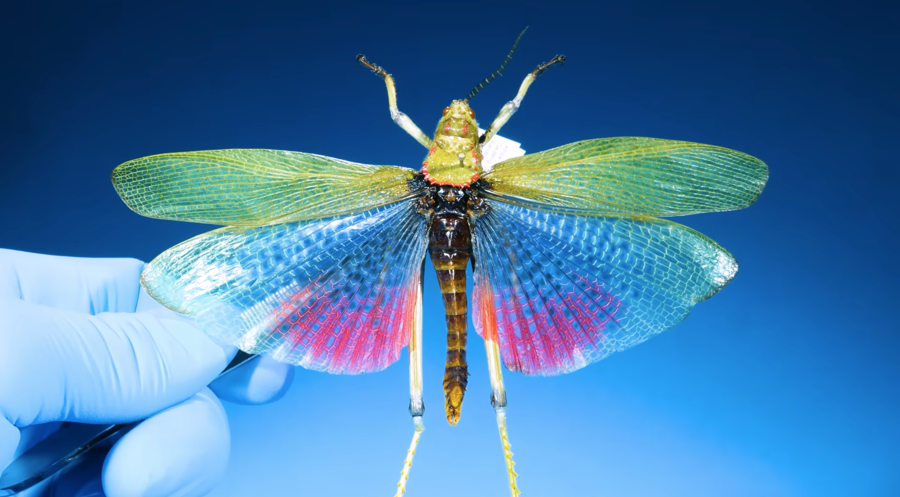What’s the difference between a cricket and a grasshopper? What’s the difference between a grasshopper and a katydid? How do grasshoppers make noise? And what percussion instrument parallels the summer evening sounds created by crickets and katydids?
Learn the answers to these questions and more with Charlie Engelman in this episode of Odd Animal Specimens.
Engelman provides an up-close look at a variety of crickets, grasshoppers, and katydids preserved within The Chicago Academy of Sciences’ collections at the Peggy Notebaert Nature Museum. He also compares audio samples, dispels a few common misconceptions about these long-legged insects, and includes some delightful frass-kicking footage.

Globally, there are approximately 2,400 cricket species, 11,000 known species of grasshopper, and about 6,400 species of katydids. From the Australian Museum:
“Grasshoppers, locusts, crickets and katydids belong to a group of insects known as orthopterans (meaning ‘straight wings’)…
“One of the most recognisable features of this group is their ability to produce sounds by rubbing together certain parts of their body. This is known as stridulation. Usually only the males sing to attract females but, in a few species, the female also produces sound.
“Grasshoppers and locusts have a row of pegs like a comb on their back legs. They scrape these pegs against the hard edges of the front wings to make sounds. Crickets and katydids produce sounds by rubbing their wings together. In order to hear these sounds, orthopterans have a tympanum (ear) on each front leg, just below the knee.”

Additional close-ups include the katydid’s tympanum, as well as what looks like it might be a species of rainbow milkweed locust, African grasshoppers that eat milkweed, produce toxins, and warn off predators with its colors.

A sponsored message supporting the channel begins around the 6m30s.
Engelman‘s World By Charlie and Nature Boom Time videos are favorites on TKSST. Find more information and calm piano stylings from Odd Animal Specimens on Instagram, TikTok, Patreon, and YouTube.
Then watch a few related videos:
• The Lychen Katydid camouflages
• The Giant Texas Katydid (Neobarrettia spinosa)
• Leaf Mimicking Grasshopper, a master of disguise
• How do ticks become 100x their original size?
• Why are museum collections so important? Sir David Attenborough explains
Curated, kid-friendly, independently-published. Support this mission by becoming a sustaining member today.

